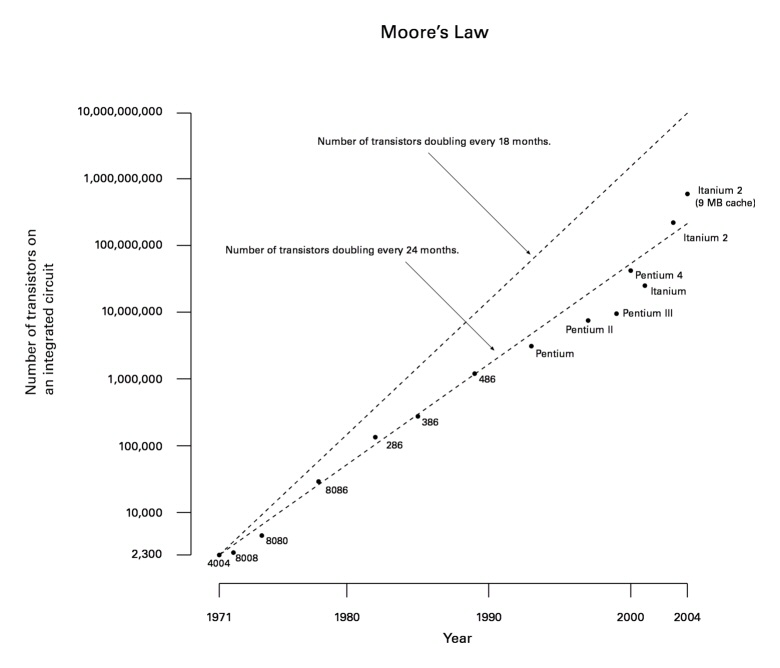People speculate endlessly about how long Moore's law can continue. Why does nobody seem to ever ask why it works in the first place?
We take it for granted that computers are always getting faster. Moore's law predicts that the number of transistors on a single integrated circuit will double every 24 months.
Technology should improve over time. Each computer generation provides better tools for building the next. What is astonishing about the Moore's law is its regularity and predictability over a period of more than 30 years.
When a phenomena is as reliably predictable for so long there must be some sort of control mechanism at work regulating it. Why 24 months? Why not 36? or 12?
I suspect that the explanation for Moore's law is probably Moore's law itself. Production of ICs is a complex process requiring many steps. Each reduction in the minimum feature size requires advances in many different fields. Silicon crystals must be grown that have fewer defects. Lithography techniques must advance to the next level as must the techniques for cutting the mask. Deposition and polishing techniques must improve.
Improvement in only one area is no use unless the other areas make the necessary improvements and so whenever a particular area appears that its rate of progress may cause it to fall short of the demands of Moore's law considerable additional effort is concentrated on the problems to ensure that this does not happen. The dependence on progress in other areas means that the reward for progress that is too far in advance of Moore's law in a single isolated area is limited.
Ultimately Moore's law becomes the metronome that regulates the progression of the state of the art. Chip makers and the equipment manufacturers who supply them both aim to deliver technology that is just slightly ahead of the demands of Moore's law at the time. If either fails to deliver on time it will be quickly replaced by a competitor who does.
Wednesday, July 19, 2006
Moore's law - why does it work?
![]()
![]() Linkworks:
FARK
del.icio.us
StumbleUpon
reddit
Linkworks:
FARK
del.icio.us
StumbleUpon
reddit
Subscribe to:
Post Comments (Atom)

No comments:
Post a Comment